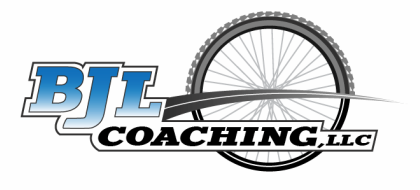|
Here's a great article found on Training Peaks written by Andy Blow, a hydration expert. Use these tips for the BJL Coaching/Cycle Craft Trainer Sessions or where ever you may be training indoors. Get more out of your indoor training time by being properly hydrated! Coach B.L. 5 Steps to Stay Hydrated During Indoor Training Monday, December 14, 2015 | By Andy Blow During winter, most of us are forced indoors for at least some of our training. This typically means spending many brain-numbing hours on the turbo trainer, treadmill, or in the gym with a pool of salty sweat gradually soaking the carpet. But do we actually sweat more indoors than outdoors, or is that salty pool just a red herring? To answer that, it’s useful to understand what it is that makes us sweat in the first place. The answer to that question is pretty obvious- heat. The Effects of Heat We sweat when our core body temperature (CBT) rises beyond a certain point, as the body has to tightly control this variable to keep us alive and functioning. What many people don’t realize is that the heat given off by your working muscles is the biggest influencer of CBT when exercising. So, how much you sweat is almost exclusively driven by how hard you’re pushing and not a lot else other than basic genetics. This was shown neatly in a recent study that also demonstrated that the contribution of things like body fat, overall size, and weight actually have a minimal impact on sweat rate. Most of us go for ‘quality over quantity’ sessions when training indoors, only a real masochist actually enjoy long sessions on the trainer. This makes the intensity of the average indoor workout higher than we’d normally do outdoors. As a result, this leads to more sweat loss per unit of time. Air Flow and Temperature There are two other reasons why it often feels like you’re sweating more indoors than you do outside. The first reason is air flow. When outdoors, you’re moving through air so, even on a still day, you get some airflow past the skin. Air movement causes heat to be drawn away from the body’s surface more effectively (via convection and sweat evaporation) and this cools you. On a static bike or treadmill, you lose this airflow and therefore the sweat tends to drip off you, making you more aware of it. And as there's no natural cooling effect, you probably actually do sweat a little more to compensate too. The second reason is the ambient temperature and humidity. Your body tries to offload heat to the environment when you’re training. The bigger the gradient between the air temperature, and the lower the humidity, the easier it is for heat to be evaporated away. As many places we indoor train are already quite warm and humid, the gradients for heat loss and evaporation are less pronounced than outside, and this further hinders thermoregulation and drives sweat rate up. So, whilst you don’t necessarily sweat a lot more indoors than outdoors, there are reasons why total sweat loss might be higher some of the time. The Five Steps to Staying Hydrated For Indoor TrainingThere are five simple steps you can take to ensure that you are well hydrated for your daily training session. 1. Show up well hydrated As many indoor training sessions are short and intense, it’s important to make sure you start well hydrated in the first place. Your ability to thermoregulate by sweating will be maximized if you start in the right shape. Aim to take on 500 - 750ml (roughly 16-25oz) water (or an electrolyte drink) a few hours before your session so that your body has time to process and absorb what it needs and eliminate any excess. 2. Don’t overdo it There’s no need to go overboard on fluid in the immediate build up. Just try to stick to good hydration practices on a day to day basis. 3. Add sodium If you do find yourself low on fluid with a session looming, you can cheat a bit by adding some additional sodium to your drinks in the hours before starting to maximize absorption of the fluids you do consume. 4. During the session, drink to thirst Don’t interfere with what you’re actually there to do by trying to take on unnecessary amounts of fluid. 5. When finished, continue to drink to thirst and maybe add sodium to your drinks or food If you feel like you’re losing the battle to keep up with what is being sweated out, the best way to do this is through electrolyte tablets or salt capsules. By doing that you give your body the best chance of rehydrating fully before you put yourself through it all over again the very next day. This winter, as you move indoors don’t forget to stay on top of your hydration. Following a few simple steps will keep you hydrated correctly and able to perform at your best. ABOUT THE AUTHOR Andy Blow lives in the U.K. and is one of the founders of Precision Hydration. He is an ex-elite level triathlete with an Xterra World Age Group title, several top 10 Ironman and 70.3 finishes to his name. In recent years he has been competing in multi-sport and adventure races for fun including Coast to Coast New Zealand, OTillO Sweden and the Transalpine Trail Run, with his incredibly supportive wife Lucy and their son Bobby agreeing to pretend that trips to these events are actually family holidays. Follow him@myh2pro.
1 Comment
|
Categories
All
Coach B.L.Coach B.L. is the head coach at BJL Coaching and an avid racer and cycling enthusiast himself. Archives
July 2024
|

 RSS Feed
RSS Feed